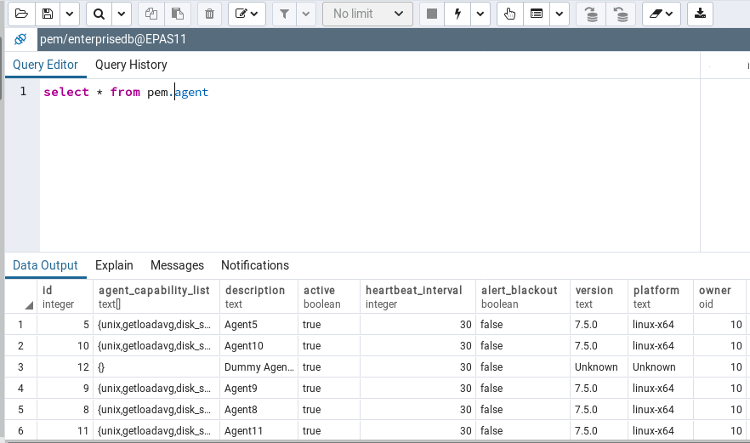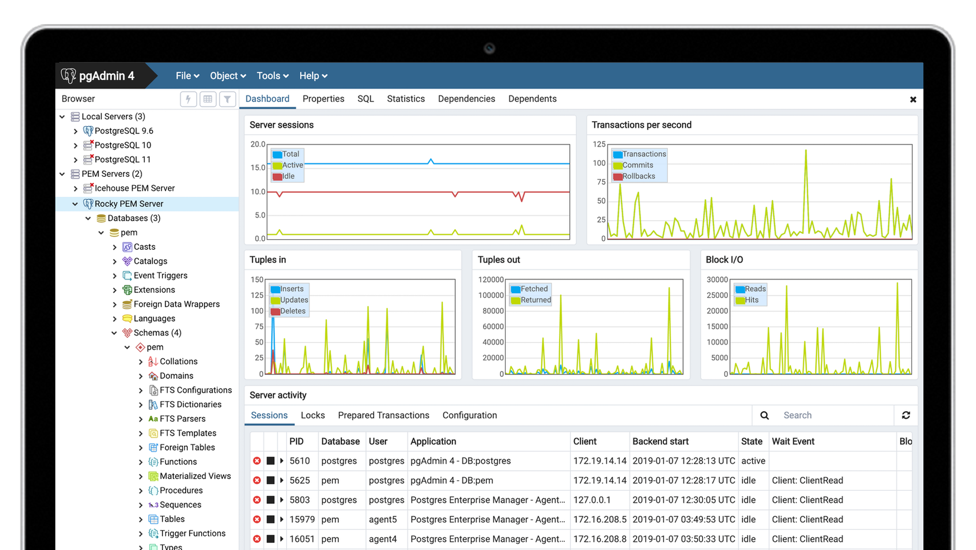

ScriptAlias /cgi-bin/ /home/pgadmin/cgi-bin/ I have created new virtual server, Below is the nf configuration of virtual hostĮrrorLog /var/log/virtualmin/_error_logĬustomLog /var/log/virtualmin/_access_log combined I am using Virtualmin for creating virtual servers. mod_wsgi (pid=19004): Target WSGI script ‘/usr/lib/python2.7/site-packages/pgadmin4-web/gi’ cannot be loaded as Python module. ModuleNotFoundError: No module named ‘click’ File “/usr/lib/python2.7/site-packages/pgadmin4-web/flask/cli.py”, line 17, in File “/usr/lib/python2.7/site-packages/pgadmin4-web/flask/app.py”, line 27, in File “/usr/lib/python2.7/site-packages/pgadmin4-web/flask/_init_.py”, line 21, in from flask import Flask, abort, request, current_app, session, url_for File “/usr/lib/python2.7/site-packages/pgadmin4-web/pgadmin/_init_.py”, line 17, in from pgadmin.utils import env, IS_PY2, IS_WIN, fs_short_path File “/usr/lib/python2.7/site-packages/pgadmin4-web/config.py”, line 30, in File “/usr/lib/python2.7/site-packages/pgadmin4-web/gi”, line 25, in mod_wsgi (pid=19004): Exception occurred processing WSGI script ‘/usr/lib/python2.7/site-packages/pgadmin4-web/gi’. Wed Nov 29 05:33:35.591298 2017] mod_wsgi (pid=19004): Target WSGI script ‘/usr/lib/python2.7/site-packages/pgadmin4-web/gi’ cannot be loaded as Python module. – Open and logon to the PgAdmin using your credentials. – If the Firewall is enabled, execute the following command to enable http service : # firewall-cmd -permanent -add-service=http – To make sure PgAdmin can access to the PostgreSQL server we need to adjust Selinux to allow Apache to connect via network using the following command # setsebool -P httpd_can_network_connect 1 Step 4. – Restart Apache by running the below command # systemctl restart httpd – Use the following command to check the apache configuration: # apachectl configtest WSGIScriptAlias / /usr/lib/python2.7/site-packages/pgadmin4-web/gi WSGIDaemonProcess pgadmin processes=1 threads=25 – Create a new apache virtual host file and add the following lines # vi /etc/httpd/conf.d/nf Create the Apache Virtual Host for PGAdmin 4 # chcon -R -t httpd_sys_content_rw_t "/var/lib/pgadmin4/" Step 3. – If the SeLinux is enabled, adjust the SELinux policy using the following commands: # chcon -R -t httpd_sys_content_rw_t "/var/log/pgadmin4/" # chown -R apache:apache /var/log/pgadmin4 – Change the ownership of the configuration database directory to the user Apache: # chown -R apache:apache /var/lib/pgadmin4

#Pgadmin 4 password#
NOTE: Configuring authentication for SERVER mode.Įnter the email address and password to use for the initial pgAdmin user account: # python /usr/lib/python2.7/site-packages/pgadmin4-web/setup.py – Run the following command to create the configuration database. STORAGE_DIR = '/var/lib/pgadmin4/storage' SESSION_DB_PATH = '/var/lib/pgadmin4/sessions' SQLITE_PATH = '/var/lib/pgadmin4/pgadmin4.db'

LOG_FILE = '/var/log/pgadmin4/pgadmin4.log'

# vi /usr/lib/python2.7/site-packages/pgadmin4-web/config_distro.py Open config_distro.py file and add the following settings: – In order to configure pgAdmin to run in server mode properly as a web application, it may be necessary to specify the path of the PgAdmin database, Sessions and Log file.
#Pgadmin 4 install#
– Use the following command to install PgAdmin 4 v2 # yum install pgadmin4-v2 Step 1. – To install PgAdmin4 v2, we are going to use the PostgreSQL RPM, use the following command to install the PostgreSQL repository: # yum install -y
#Pgadmin 4 how to#


 0 kommentar(er)
0 kommentar(er)
